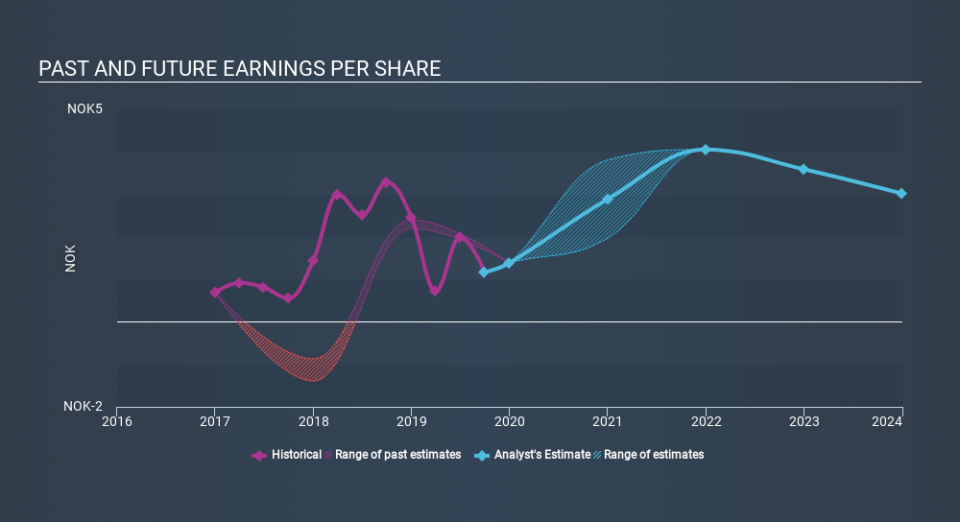Investors Who Bought Solon Eiendom (OB:SOLON) Shares Three Years Ago Are Now Up 17%

Buying a low-cost index fund will get you the average market return. But across the board there are plenty of stocks that underperform the market. That's what has happened with the Solon Eiendom ASA (OB:SOLON) share price. It's up 17% over three years, but that is below the market return. In the last year the stock price gained, albeit only 2.7%.
View our latest analysis for Solon Eiendom
There is no denying that markets are sometimes efficient, but prices do not always reflect underlying business performance. One imperfect but simple way to consider how the market perception of a company has shifted is to compare the change in the earnings per share (EPS) with the share price movement.
During three years of share price growth, Solon Eiendom achieved compound earnings per share growth of 19% per year. This EPS growth is higher than the 5.4% average annual increase in the share price. Therefore, it seems the market has moderated its expectations for growth, somewhat.
You can see how EPS has changed over time in the image below (click on the chart to see the exact values).
We consider it positive that insiders have made significant purchases in the last year. Having said that, most people consider earnings and revenue growth trends to be a more meaningful guide to the business. Before buying or selling a stock, we always recommend a close examination of historic growth trends, available here..
What About Dividends?
When looking at investment returns, it is important to consider the difference between total shareholder return (TSR) and share price return. The TSR is a return calculation that accounts for the value of cash dividends (assuming that any dividend received was reinvested) and the calculated value of any discounted capital raisings and spin-offs. So for companies that pay a generous dividend, the TSR is often a lot higher than the share price return. In the case of Solon Eiendom, it has a TSR of 35% for the last 3 years. That exceeds its share price return that we previously mentioned. This is largely a result of its dividend payments!
A Different Perspective
Over the last year Solon Eiendom shareholders have received a TSR of 8.1%. While you don't go broke making a profit, this return was actually lower than the average market return of about 10%. But the (superior) three-year TSR of 11% per year is some consolation. Even the best companies don't see strong share price performance every year. It is all well and good that insiders have been buying shares, but we suggest you check here to see what price insiders were buying at.
Solon Eiendom is not the only stock insiders are buying. So take a peek at this free list of growing companies with insider buying.
Please note, the market returns quoted in this article reflect the market weighted average returns of stocks that currently trade on NO exchanges.
If you spot an error that warrants correction, please contact the editor at editorial-team@simplywallst.com. This article by Simply Wall St is general in nature. It does not constitute a recommendation to buy or sell any stock, and does not take account of your objectives, or your financial situation. Simply Wall St has no position in the stocks mentioned.
We aim to bring you long-term focused research analysis driven by fundamental data. Note that our analysis may not factor in the latest price-sensitive company announcements or qualitative material. Thank you for reading.

 Yahoo Finance
Yahoo Finance 
